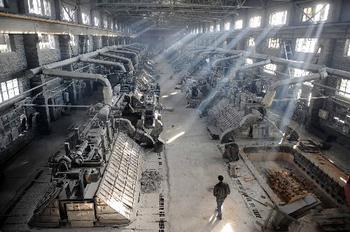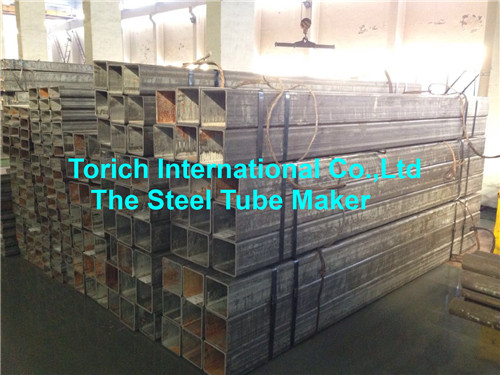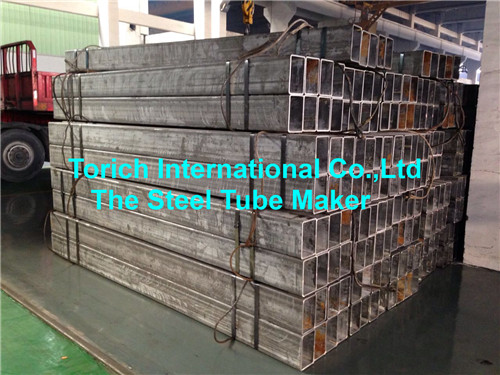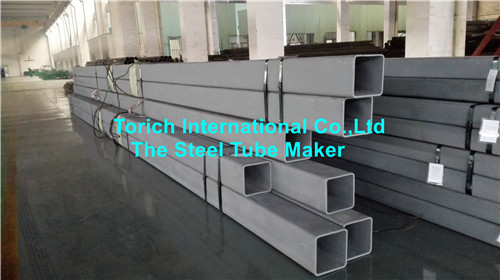 The mineral resources of Xinjiang that absorb “gold†are rich in mineral resources in Xinjiang. The mineralization geological conditions are unique, and the potential of mineral resources is huge. It is a strategic replacement area for China’s resources. According to reports, the Xinjiang iron-rich ore reserves account for 36.65% of the total reserves in the region; coal coal is mostly low*, low-phosphorus, and low-ash, among which coking coal accounts for 9.16% of proven coal reserves; it has a group of high-quality copper mines, High quality bentonite, mica, vermiculite, andalusite and potash minerals.
The mineral resources of Xinjiang that absorb “gold†are rich in mineral resources in Xinjiang. The mineralization geological conditions are unique, and the potential of mineral resources is huge. It is a strategic replacement area for China’s resources. According to reports, the Xinjiang iron-rich ore reserves account for 36.65% of the total reserves in the region; coal coal is mostly low*, low-phosphorus, and low-ash, among which coking coal accounts for 9.16% of proven coal reserves; it has a group of high-quality copper mines, High quality bentonite, mica, vermiculite, andalusite and potash minerals. According to the person in charge of the Department of Land and Resources of Xinjiang Uygur Autonomous Region, in recent years, the country has attached great importance to the exploration of geological mineral resources in Xinjiang. At present, Xinjiang has formed a pattern of "big geology and large mining." The geological prospecting in Xinjiang has achieved a number of major breakthroughs, not only the discovery of world-class sodium methemite deposits, but also major breakthroughs in the exploration of iron, coal, and non-ferrous metals. At present, a large amount of funds are flowing into the development of mineral resources in Xinjiang, which is of great significance to the national energy resources strategy.
Predatory development will be "somewhat worse"
Relevant experts proposed that with the acceleration of economic development, the development of mineral resources will increase significantly. If no practical protection measures are taken, the exploitation of a large-scale predatory mineral resource will make the extremely fragile Xinjiang ecological environment “somewhat worseâ€. While the importance of resources in Xinjiang is recognized by investors, relevant management departments should pay more attention to standardize management and achieve breakthroughs in the adjustment of mining structure, and provide Xinjiang with the construction of petrochemical bases, coal chemical bases, black and non-ferrous metal bases, and important non-metallic bases. Guarantee.
In the past, the extensive exploitation of mineral resources in Xinjiang was serious and violations were widespread. The survey shows that in the development and utilization of mineral resources in Xinjiang, neglect of environmental protection, ecological restoration and pollution control are common. The mining enterprise does not have the overall plan for the exploitation and utilization of mineral resources, or does not exploit the plans for exploitation and utilization of mineral resources, and the mining methods for mineral resources are unreasonably extensive. Such as unlicensed mining, indiscriminate mining and digging, mining methods behind, low resource extraction rate, mining thin abandoned and abandon mining poverty; choose the most easily exploitable places and parts for production, lack of long-term planning, make a lot of rich ore into a poor Minerals, minerals that can be mined for 10 years are often abandoned in production for several years, resulting in great waste of resources, resulting in low recovery rate of mineral resources, and the lack of comprehensive utilization of associated minerals, destroying and wasting mineral resources; metal mines After waste cinder, tailings and heavy metal minerals are treated with cyanide, any waste water will be discharged, resulting in contamination of land and rivers with toxic heavy metal ions such as mercury, lead, aluminum and cyanide in the waste water; solid waste such as tailings during exploration and development of mineral resources. Piling up large amounts of land, destroying surface soil and vegetation, causing serious soil erosion; “three wastes†(exhaust gas, waste water, and solid waste) reaching low standards, low ecological environment restoration and treatment rates, and low land reclamation rate. Problems such as the deterioration of vegetation, land and water environment have become the “bottleneck†that restricts the sustainable use of mineral resources in Xinjiang; In the case of mining rights market order has not yet formed, the phenomenon of illegal transfer of mining rights are more disrupted mining rights market to some extent, affected the normal order of mining development.
The government proposed "orderly, restrained"
The fragile ecological environment has determined that the development of Xinjiang's mineral industry must be developed in a sustainable manner in accordance with the principles of "resources are assured, industries have a foundation, products have markets and resources have benefits and ecological protection is safeguarded." We must implement the integration of mineral development and environmental protection, attach importance to the environmental effects of mineral development, and become an “ecological energy mining industry†that has no damage or minimizes damage. The opening of mines in Xinjiang should be synchronized with ecological construction. The production of raw materials must be supported by high-value-added deep processing, and it must be efficient, high-quality, and sustainable. In the course of development and utilization, we must adhere to the principle of “who develops and protects, who pollutes and administers, and who destroys and restoresâ€, and comprehensively use legal, economic, and administrative methods to improve the mine's ecological environment. The leader of the Xinjiang Uygur Autonomous Region clearly stated that development should be orderly, controlled, and planned. It must not trade for economic development at the expense of the environment. Xinjiang’s ecological environment will be difficult to recover after its destruction, and it will no longer be possible to take the old road of destruction first. We must not exchange for the temporary economic development at the expense of the ecological environment.
In response to the problems in the development of resources, in recent years, Xinjiang has carried out large-scale renovations of mining development, shutting down small mines that waste resources, lagging behind in process, and polluting the environment, and at the same time introduced large enterprises and big groups to participate in Xinjiang. The development of resources has gradually led resource development to the path of healthy development. In response to the outstanding problems in resource development, Xinjiang's relevant departments also suggested that: Party and government leaders and party leaders at all levels in Xinjiang should effectively strengthen the top-level system design for leap-forward development and clearly define areas for development, major development, and restrictions on development and prohibition of development. Define the industrial layout, access conditions for various resource development and construction, and pollution discharge standards, standardize resource development and project introduction, increase efforts in environmental protection checks, and actively explore new approaches to environmental protection with low cost, good efficiency, low emissions, and sustainability Roads; We must strictly handle heavy penalties and serious handling of environmental violations and violations. If the circumstances are serious, we must pursue party discipline, political discipline, and legal responsibilities; consider environmental protection as the main content of the performance evaluation of leading cadres at all levels, and select, appoint, and award rewards. Important reference.
"Eco-accounts" to eat dry squeezed
Under the guidance of the concept of "sustainable mining development and sustainable ecological environment", Xinjiang's metallurgical and mining enterprises are moving toward a green development path. Each mining enterprise has adopted a series of measures: First, through the exploration of potentials and industrial extension, it has realized the secondary development of resources, increased the degree of deep processing of resources, increased the added value of products, and extended the use of mines and service years; second, strengthening of mineral resources and mining Comprehensive utilization of waste, increase the comprehensive development and utilization of resources, improve the technical content and added value of products; Third, through the comprehensive utilization of industrial waste, extend the industrial chain and form a new mining development model.
In the development of minerals, enterprises not only count the economic accounts of the resources, but also calculate the environmental protection accounts of green ecology, and try to use resources to “eat dry squeeze†to achieve zero emissions. The mining enterprises not only comprehensively utilize the symbiotic or associated minerals with industrial value, but also reprocess and reuse the "three wastes" resources such as tailings and tailings resources, so that the total recovery rate of mineral resources and the total associated mineral resources Comprehensive utilization rate has been greatly improved, thus achieving a win-win result of economic and social benefits. At the same time, the grade of iron ore recovered in Xinjiang has also dropped from 45% to 28%. Please see three examples:
Example 1: Asbestos Tailings Processing Iron Powder Recently, the first domestic production line for using iron asbestos tailings to extract iron powder has been successfully tested in the Etonbrook Industrial Park in Ruoqiang County, Xinjiang, with an annual output of 30. The production line of 10,000 tons of fine iron powder was also put into production at the end of May. Local asbestos mines have been produced since the mid-1960s. In the nearly 50 years of production, over 100 million tons of asbestos tailings have been produced, which has exposed them to the local ecological environment for a long time. The above-mentioned iron powder production line can process valuable asbestos tailings into iron powder and pellets for steel production. According to the chairman of Depeng, who invests in the production line, if the amount of asbestos tailings in Rugao is quite large, it can be produced for 30 years to 50 years according to an annual output of 300,000 tons of fine iron powder. At present, few people try to extract iron powder from asbestos tailings. Asbestos tailings have high iron content. After the primary election, iron content is increased through dry selection, wet selection and other processes, and further processed into iron fine powder. After repeated studies and many practice shows that this is a mature set of technical processes. The first phase and second phase of the project will produce fine iron powder and pellets. In 2014, the second production line will be built. At that time, the annual production capacity will reach 600,000 tons of fine iron powder. At the same time, iron concentrate produced by other companies in the park can be integrated and processed. The pellets will increase the added value, the output value will reach 800 million yuan, and the profits and taxes are expected to reach 100 million yuan.
Example 2: Copper mine tailings can also obtain fine iron powder Habahe County in Xinjiang Altay Prefecture. The state-owned large-scale copper ore Assele Copper Mine is a large-scale volcanic eruption of the northwestern China and is derived from pyrite copper and zinc. Metal ore deposits, originally proven ore reserves of 38 million tons, associated with iron, zinc, gold, silver, etc., is China's second largest discovery of copper mines. In the past two years, Fujian Zijin Mining Group began to use its brains on the tailings. The copper mine has 1.3 million tons of tailings accumulated in the tailings reservoir each year. Tailings contain 30% of iron and 33% of *, while containing zinc, gold, silver and other metals. If all these metals are extracted, the tailings will become zero tailings. At present, the company has carried out comprehensive utilization and development of abandoned tailings, and can obtain 300,000 tons of fine iron powder each year, so that the industrial chain of resources has been extended, limited resources have been fully utilized, and “zero emissions†have been achieved.
Example 3: The iron ore mine tailings economy has considerable economic benefits. Xinjiang Yamanshu Iron Mine has accumulated more than 50 million tons of rock excavation in the past 50 years, exploited 15.2 million tons of open-pit iron ore, and accumulated 513,400 tons of ore normally, with an average loss rate of 2.98%. The average ore-bearing rate of the platform is 0.89% and the grade is 45%. A total of 450,000 tons of iron ore is left in it, causing waste of resources, but there is ample room for use. Ya Mine Company regards it as the recycling of wealth. The mine began processing in 2000 and has discharged 2.45 million tons of tailings for several years. In the initial stage of production, due to factors such as process and operation level, the iron content in the tailings is very high. After analysis, the grade of iron contained in the tailings averages 20%, and some periods reach as high as 25%. This indicator even surpasses some low-grade mines in the Mainland. Mining grade. According to the 20% grade calculation, nearly 500,000 tons of iron ore resources remain in the tailings. Now, the mine has started flotation and magnetic separation of tailings. The annual recovery of 65.01% of iron fines is 50,000 tons, which can yield considerable economic benefits.
Xinjiang Songhu iron ore reserves exceed 50 million tons. In 2012, the production of iron fines reached more than 500,000 tons. The high-standard tailings dam with an investment of 30 million yuan is a tailings dam with high investment and high standards in Xinjiang's metallurgical system. Since 2012, the mine has collaborated with scientific research institutions to test the tailings slag and determined the feasibility of reuse of the tailings. They invested 8 million yuan to build a tailings re-election project. The tailing slag was pumped to a spiral chute for re-election using a dredging vessel, and 55% of the iron fines were selected. The remaining tailings were made into unburned bricks or retanning.
Seamless Square Steel Tube, are produced by Square Mandrel and Die,
with cold drawing production method,the Square shape is produced.
The size range could be from:
OD 10X10mm to 300x300mm
WT 0.5 to 30mm
Length: max 12000mm according to customer PO.
Applications:
Bridge Building,
Constructure Building,
Railway Construction,


Surface Passivating and Paiting:


Seamless Square Steel Tube
Seamless Square Steel Tube,Stainless Steel Square Tube,Seamless Stainless Steel Square Pipe,Carbon Square Steel Pipe
Torich International Co.,Ltd--The Steel Tube Maker , http://www.chinasteeltubepipe.com